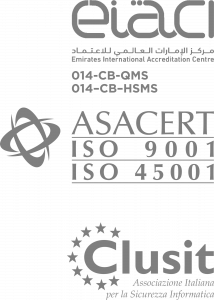Smart Drones

Infrastructure
GSD BRIDGE

The drones used for bridge inspection minimize the risk for operators and users. They are an indispensable tool because they are used in inspections that do not require contact with the structure. They are therefore ideal for analyzing personnel anchor points and other safety, cleaning and restoration needs.
The GSD-BRIDGE inspection service, with visual imaging detection on bridges, allows for inspections of areas that are difficult to access to humans and / or at important heights. Our autonomous drones allow to have an image resolution in any position and operating condition.
GlobsitSmartDrone BRIDGE inspection, always timely of the bridges, is the first step to keep the structures safe and in good condition.
The negative sides of traditional systems (high costs, riskiness of operations, impossibility or great difficulty in reaching places and the impact on users’ traffic) are still the main reason for the absence of controls or their frequency not sufficient to guarantee security to the community. With the use of AI applied on SmartDrone, there is concretely the possibility of improving the infrastructures – in this case structures such as bridges – precisely because the various limitations of traditional methodologies are largely overcome thanks to the AI operational peculiarities.
To these significant improvements is added the quality of the information collected.
Thanks to the easy use of drones, it is now possible to produce:
• High resolution photographic images of parts of the structure
• Georeferenced images
• Parametric 3D models of parts of the structures, which can then be analyzed at the table with the possibility of making measurements (length, area, volume) without limits and without having to physically move
• Analysis with thermal or multispectral cameras to highlight various problems (such as delamination phenomena).
• Collected data mashed up by AI software
• Statistics obtained from Data processing
• Final report downloadable from a cloud dashboard accessible from pc, tablet and smartphone
The top view also allows you to inspect the surrounding areas (waterways, vegetation, hydrogeological instability, intersecting roads and railways, etc.) thus being able to assess the impacts on the structure in question and prevent consequences in good time.
GSD BUILDING

The thermographic survey, with autonomous SAPR, allows to carry out an evaluation of the primary causes of heat loss, to verify the degree of thermal insulation and the quality of heat transfers between neighboring housing units.
The advantages are many. Drones can identify, thanks to infrared analysis, failures and malfunctions inside pipes or identify water leaks that cause disagreements between condominiums in order to be able to carry out targeted maintenance immediately.
Furthermore, the drone can carry out this type of thermographic surveys where humans have difficulty accessing, so that companies can increase the safety of their workers.
To this end, the use of SmartDrones allows you to have reliable data available in a very short time, ready to be analyzed and act accordingly.
The SmartDrone thermography is one of the methods used in the diagnostics of building pathologies which is based on the acquisition of infrared images (NIR).
The thermal imaging camera detects radiation in the infrared range of the electromagnetic spectrum and performs measurements correlated with the emission of this thermal radiation.
Thermographies, with the GSD-BUILDING inspections, allow:
• Quality assessment of buildings.
• Quantification of restructuring interventions.
• Support for energy certification.
• Investigations to search for leaks in heating systems,
• Search for water infiltrations and molds.
• Identification of thermal dispersions.
• Thermographic surveys for the restoration of public goods and historic buildings.
• Troubleshooting.
• Demonstrate thermography for dispute resolution.
GSD GRID

GlobsitSmartDrone Grid is the most efficient autonomous system for the inspection of the medium, high and very high voltage power grid. An autonomous drone is able to fly over kilometers of power lines in a short time, recording the status of the lines and any problems.
The drone’s mission is managed fully automatically: Computer Vision system, assisted by optical and laser equipment, allows you to assess the operating environment and proceed safely on the fly. Thermal and multispectral sensors on-board record the status of the overhead lines and transmit the images to an automatic analysis system, where a neural network has been trained to identify and report possible anomalies.
AI is able to recognize problems with insulators and welds and joints by classifying them by type and severity. Specifically, the Al used for GSD-GRID allows the recognition of:
• Malfunctions of the isolators
• Problems with welds
• Joint problems
• Natural obstacles and obstacles
All the data collected will be available in an easy-to-consult cloud Dashboard that allows you to identify all the anomalies found on a geolocated map. Each anomaly will be georeferenced and classified by type and severity. The data are compared in real-time with those already available in order to improve the accuracy of the information extracted and therefore plan the traditional and preventive maintenance correctly.
CERTIFICATIONS

